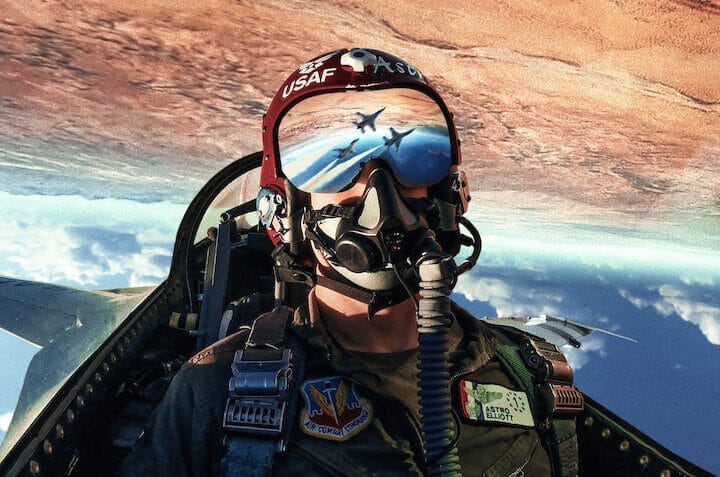Penguins are ubiquitous in zoos, aquariums, and countless films, often appearing familiar and easily understood. Yet, beneath this recognizable exterior lies a world of surprising complexity, resilience, and struggle, much of which has remained hidden until now. National Geographic’s ambitious three-part documentary miniseries, “Secrets of the Penguins,” peels back the layers surrounding these beloved birds, revealing astonishing behaviors never before captured on film and delivering a poignant message about their fight for survival on a rapidly changing planet.
Launching around Earth Day 2024, precisely two decades after the iconic, Oscar-winning “March of the Penguins” captivated audiences worldwide, this new series aims to redefine our understanding of these creatures. It marks the latest chapter in National Geographic’s Emmy-winning “Secrets of…” franchise, which has previously explored the hidden lives of whales, elephants, and octopuses. Backed by the formidable production power of National Geographic Explorer and Oscar-winning filmmaker James Cameron, and narrated by actress Blake Lively, the series leverages significant star power and the trust the Nat Geo brand inspires.
A World of Penguins: Beyond the Antarctic Ice
“Secrets of the Penguins” immediately shatters the monolithic image of the penguin confined to the icy landscapes of Antarctica. The series embarks on a global expedition showcasing the extraordinary diversity within the penguin family and their surprising adaptability to vastly different environments.
While the majestic Emperor penguins (Aptenodytes forsteri), the largest and perhaps most iconic species, feature prominently in their extreme Antarctic home (filmed in locations like Atka Bay and the Ekström Ice Shelf), the narrative extends far beyond the polar ice. Viewers journey to the equator to witness Galápagos penguins (Spheniscus mendiculus) thriving among volcanic rocks and cacti, employing unique survival strategies in their tropical habitat.
The series ventures to the coasts of Africa, revealing African penguins (Spheniscus demersus) navigating the challenges of desert caves in Namibia and the bustling streets near Cape Town, South Africa. Further south, in the tempestuous Southern Ocean, the focus shifts to the “rebels” and “risk-takers”: the Gentoo (Pygoscelis papua), Southern Rockhopper (Eudyptes chrysocome/chrysolophus), and Macaroni penguins (Eudyptes chrysolophus), filmed on remote, wind-battered islands like South Georgia. Even Adélie penguins (Pygoscelis adeliae) make an appearance, primarily in the context of their vulnerability to Antarctica’s changing climate.
This deliberate showcasing of geographic and species diversity serves a crucial narrative purpose. By presenting penguins thriving—or struggling to survive—in deserts, tropics, and urban peripheries, the series actively counters the simplistic, ice-bound stereotype. It reframes adaptability and ingenuity, not just cold tolerance, as defining penguin characteristics, compelling audiences to reconsider their understanding of these birds.
Never-Before-Seen Wonders: Unveiling Penguin Secrets
“Secrets of the Penguins” delivers truly groundbreaking footage, capturing behaviors previously unknown or only speculated upon by scientists.
The most widely publicized revelation is the astonishing Emperor penguin cliff jump. Filmed in Antarctica’s Atka Bay, the sequence documents hundreds of chicks, having taken a “wrong turn” on their first journey to the sea, congregating at the edge of a 50-foot-high ice precipice. This behavior, never before filmed for television, shows the chicks launching themselves into the frigid ocean far below for their inaugural swim.
Another remarkable “secret” is the parenting practice of Emperor penguins. Cameras capture mated pairs, possibly those unsuccessful in breeding that season, meticulously practicing the delicate transfer of an egg-sized piece of ice or snow between their feet. This apparent rehearsal highlights their social inventiveness and capacity for planning, demonstrating their ability to learn and prepare for improved reproductive success in the future.
The series also unveils the cunning tactics of Galápagos penguins, observed “attacking” larger birds like pelicans and snatching fish directly from their beaks to streamline the hunting process. Furthermore, it documents cooperative hunting strategies among banded penguins (such as African or Galápagos), where groups work together to corral fish into dense “bait balls,” dramatically increasing their foraging success compared to solitary hunting.
These documented behaviors, alongside other newly observed social skills and “revelatory bonds of friendship,” offer significant new insights into penguin intelligence, social complexity, and adaptability.
The production involved close collaboration with over 70 scientists worldwide, whose research often provided the initial clues guiding the filmmakers toward discovering these hidden aspects of penguin life.
The Epic Journey Behind the Camera: Capturing the Secrets
Bringing these secrets to the screen was a monumental undertaking, demanding extraordinary commitment, cutting-edge technology, and immense patience from the production team. The series was filmed over two years globally, involving a large international crew of filmmakers and scientists.
The sheer scale of the fieldwork is evident in the first episode, focused on Emperor penguins. Capturing their story required an astonishing 274 days of filming on Antarctica’s inhospitable Ekström Ice Shelf—a duration far exceeding typical wildlife shoots, which usually last four to six weeks. A three-person crew endured this extended period in extreme isolation and harsh conditions, camping near the colony of 20,000 penguins. This immense investment of time, repeatedly emphasized by cinematographer Bertie Gregory, was deemed essential to build trust, understand the animals’ rhythms, and be present for unpredictable, unique moments.
The production was a collaboration between National Geographic and the award-winning production company Talesmith, known for pushing the boundaries of storytelling with new technology. James Cameron’s Lightstorm Earth company also contributed executive production oversight.
At the heart of it all is Bertie Gregory, a BAFTA and Emmy Award-winning wildlife cinematographer and National Geographic Explorer. Gregory serves as the lead storyteller, guiding viewers through the world of penguins with infectious enthusiasm and deep expertise. The series is narrated by Blake Lively, and Serena Davies is the series producer.
Innovation in filming technology was critical. Advanced drones proved indispensable, especially for capturing events like the cliff jump. Improved flight times allowed crews to remain airborne for hours, patiently waiting for the action to unfold, while powerful zoom lenses enabled filming from a distance, minimizing disturbance to the wildlife. Gregory stated unequivocally that filming the cliff jump would have been impossible without drones.
Unlike many wary wild animals, penguins in most locations lack land predators and are often unfazed by human presence. This unique biological trait allowed filmmakers to get exceptionally close with wide-angle lenses, capturing raw emotion and detail in a style Gregory likens to shooting a human drama. This combination of using technology for distant observation (drones) and leveraging the subject’s natural boldness for intimate close-ups and perspectives defines the series’ distinctive visual language, offering both grand spectacle and personal connection. Other technological adaptations included testing cameras in freezers and using modified, cold-resistant cables for the extreme Antarctic chill, alongside employing Starlink satellite internet and bespoke data systems to transmit footage from remote locations.
The challenges were immense: battling extreme cold, navigating treacherous sea ice, enduring prolonged isolation, and accessing incredibly remote locations like uninhabited Southern Ocean islands that took weeks to reach.
Penguins on the Front Lines: A Story of Climate Change
“Secrets of the Penguins” does not shy away from the harsh realities its subjects face. Climate change is woven into the narrative fabric, presented not as a distant threat but as an immediate and existential challenge. As James Cameron states bluntly, “You can’t study penguins without bumping up against climate change.” Bertie Gregory observes that this reality is even more apparent in this series than in previous “Secrets of…” installments, given that many penguin species inhabit polar regions and marginal coastal environments highly vulnerable to warming.
Viewers witness Emperor penguin chicks struggling to navigate sea ice that threatens to break up and sweep them away before they are ready to swim. An explicit connection is made between the accelerating Antarctic melt and the survival of ice-dependent species like Emperor and Adélie penguins, referencing devastating mass chick mortality events linked to ice loss. Penguins are also shown searching for suitable homes in landscapes altered by changing environmental conditions.
The precarious conservation status of many penguin species is underscored: more than half of the world’s 18 species are currently classified as endangered or vulnerable. The outlook for Emperor penguins is particularly grim, with scientific projections warning that up to 70% of colonies could disappear by 2050, potentially leading to the species’ extinction by 2100 if current warming trends persist. This somber forecast lends urgency to the mission of documenting their lives now. Adding to the threat of habitat loss is the emergence of diseases like the H5N1 avian flu virus, which has caused devastating outbreaks in Antarctic colonies, placing penguins at the dangerous intersection of climate change and pandemic risks.
Resilient Birds on the Edge
“Secrets of the Penguins” achieves a remarkable synthesis: it delivers the stunning visuals and charisma expected of a major wildlife documentary while pushing the boundaries of scientific discovery and intimate storytelling. The series balances moments of awe—the unexpected intelligence, the surprising adaptations, the tender family bonds—with the stark reality of survival in threatened environments.
Through Bertie Gregory’s engaging guidance and Blake Lively’s narration, viewers come to see penguins not just as adorable curiosities but as the “unbelievably tough, resilient, adaptable animals” Gregory describes, living “on the very edge of existence.”
Enjoy the series.
Where to Watch “111111111111” (depending on your location)












